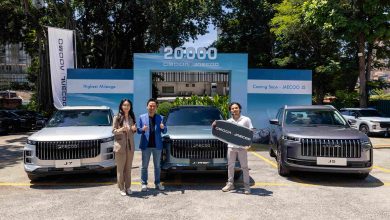2021 Lexus IS Launched In Singapore
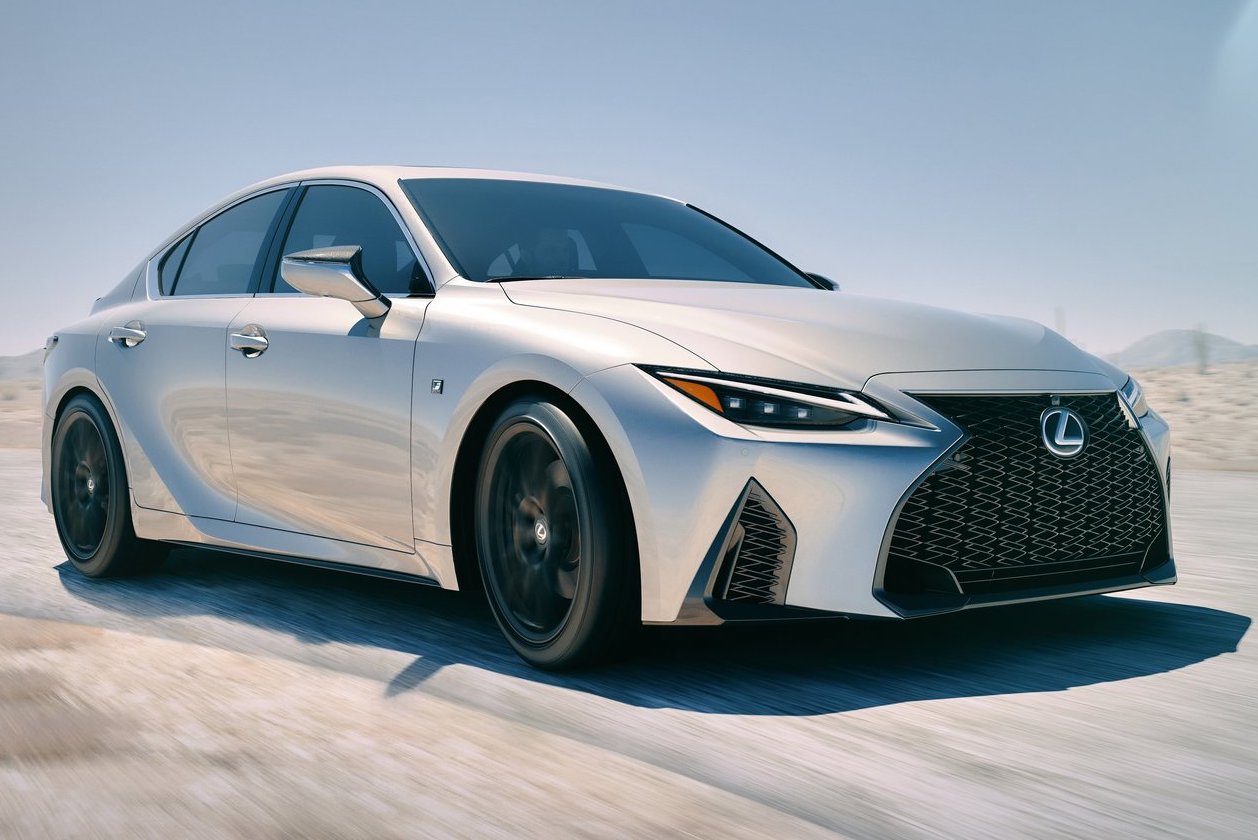
The Malaysian launch of this Lexus compact sedan should be soon too.
Lexus Singapore has recently announced the local launch of the new Lexus IS compact sedan. Coming relatively quickly after the worldwide unveiling that occurred sometime in this June, the question remains as to when will this premium Japanese small saloon officially make its way to the Lexus dealerships across the causeway.
The fourth iteration of IS to be launched, it would technically be a misnomer to say that the car is an entirely new design. Instead a comprehensive revision on the current third generation platform will be a more accurate statement, with the key word there being comprehensive.
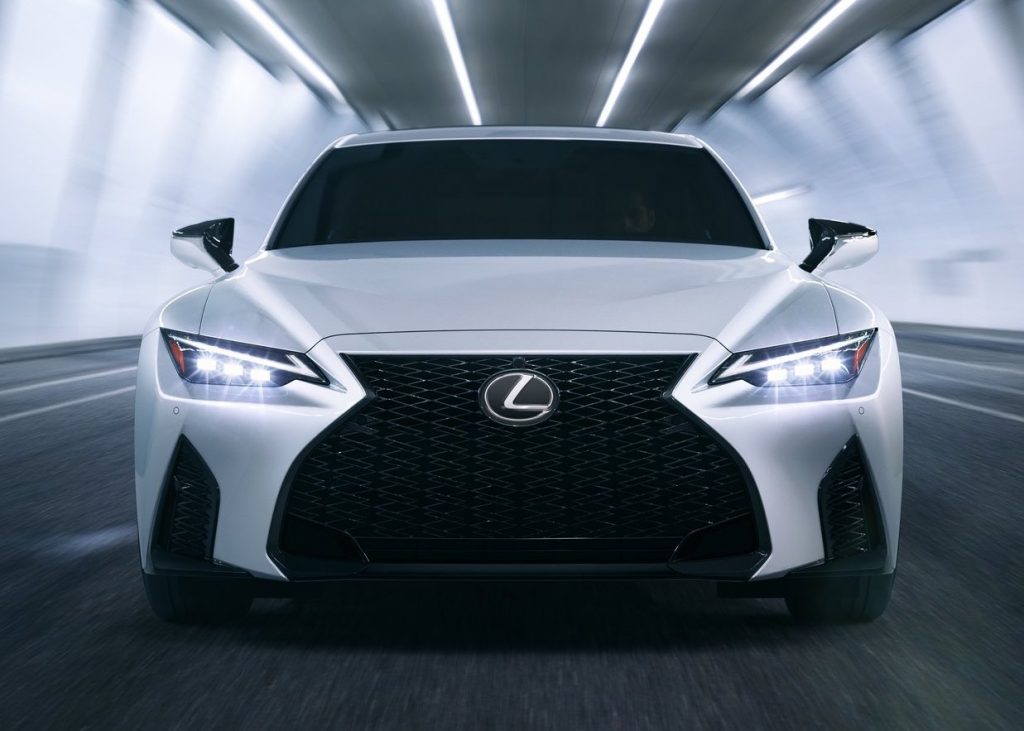
Starting at the front, this new IS has been brought bang up to date with slender LED headlights that flank the new spindle grille. Sharper and sleeker creases down the side profile meanwhile complement the new 19 inch turbine-style alloy wheel design, giving the new car a more purposeful stance. The rear end design highlights include the full-length light bar and the highly sculpted rear bumper that continues with the sharp creases from up front.
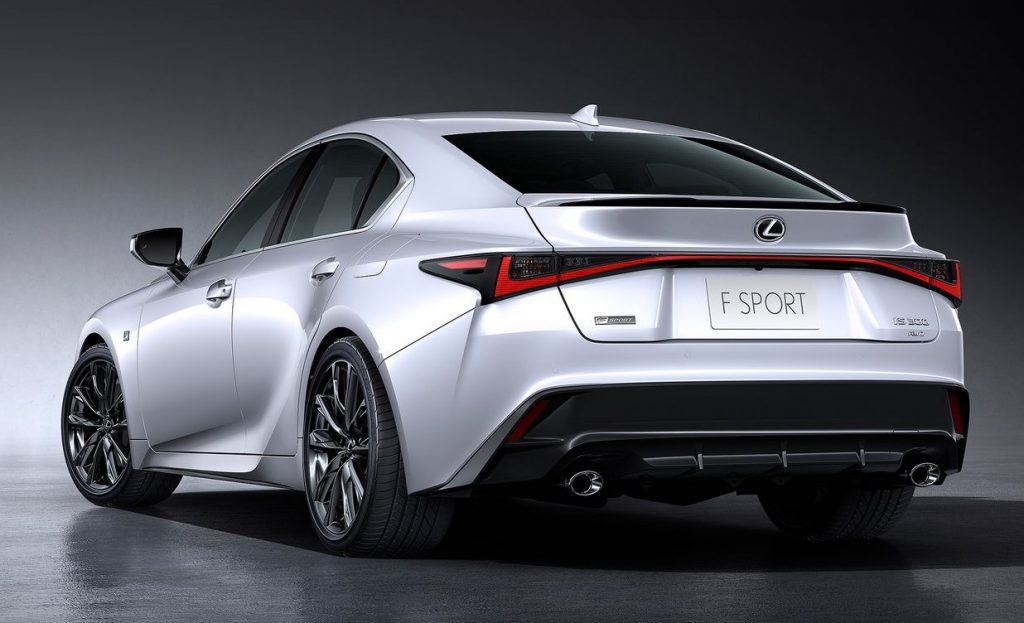
Stepping inside the latest IS, a new 10.3 inch infotainment touchscreen with Apple CarPlay and Android Auto integration is standard. Available too on the higher end models is the 17 speaker, 1,800 W Mark Levinson Premium Surround Sound Audio System.

Speaking of tech, Lexus Safety System+ is also standard across the range. Bringing with it a whole host of key active driver aids such as Pre-Collision System (PCS), Dynamic Radar Cruise Control (DRCC) with Lane Tracing Assist (LTA), Automatic High Beam (AHB), Road Sign Assist and many more.
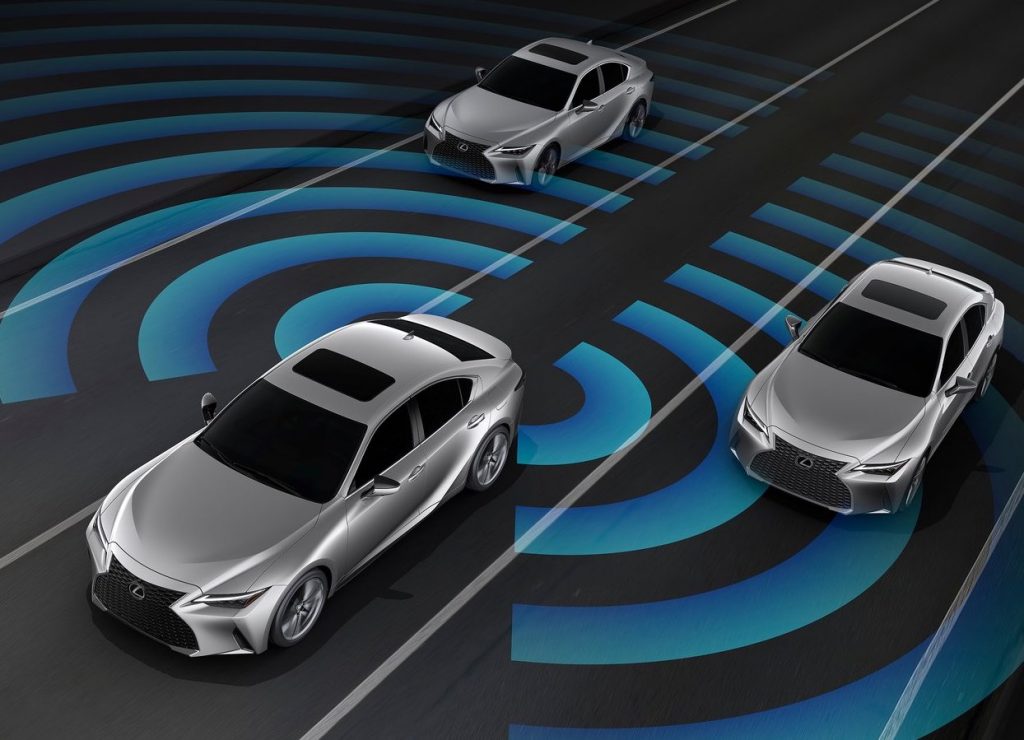
As for powertrain options, Lexus Singapore is offering a brace of petrol or hybrid powered choices. On the petrol front, there is the IS300 that is powered by a 2.0 litre turbocharged four-cylinder that outputs 241 hp and 350 Nm of torque.

For those who seek a bit more performance from their Intelligent Sport (IS) sedan however, there is also a Lexus IS350 F Sport variant, complete with a 3.5 litre naturally aspirated V6 that outputs 311 bhp and 380 Nm of torque. Mated to the same 8-speed automatic, 0 – 100 km/h is dispensed in just 5.9 seconds.

Furthermore, just to give it that added sporty touch, the F Sport also features some additional styling add-ons such as a larger front air dam, a mesh-style Spindle Grille, a bespoke 19-inch alloy wheels, a cheeky rear boot lip spoiler and a F Sport exhaust system. Available too is the Dynamic Handling Package which adds a lightweight wheels, a Torsen limited-slip differential and a selectable S+ and Custom driving mode for sporty driving occasions.
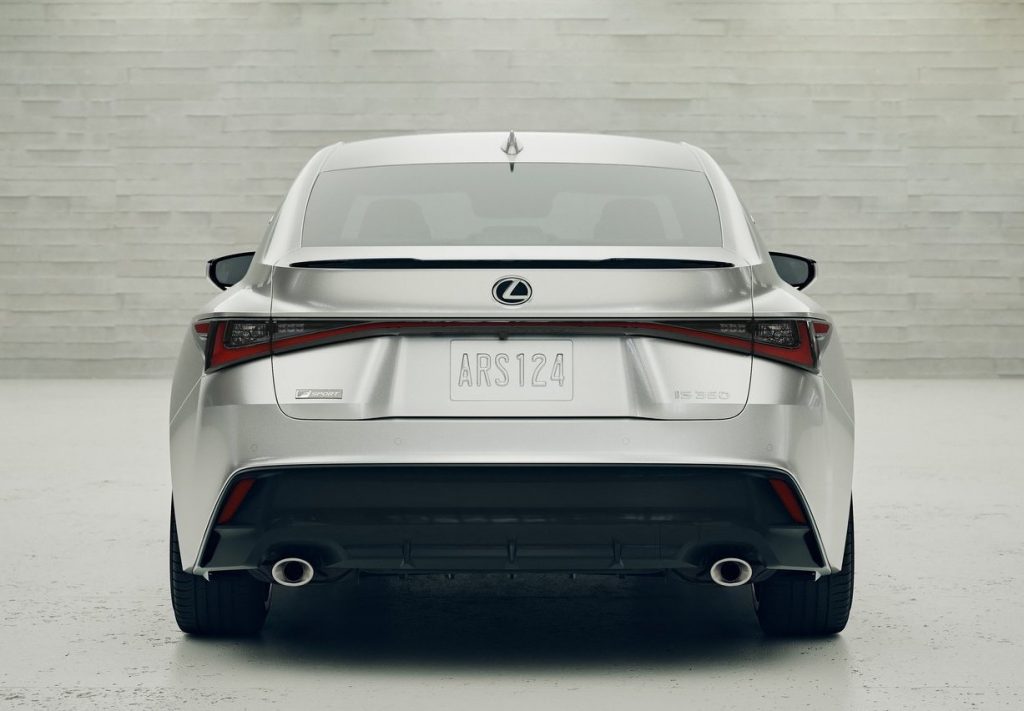
Thus far, Lexus Singapore have yet to officially announce the price of these new IS variants. Nevertheless it is at least launched over there already, prospective Lexus IS owners across the causeway will still have to be patient for a while longer before this fully-imported Japanese alternative to the usual locally-assembled German compact sedans makes its way over to the dealerships here.

PRESS RELEASE: Ever since the debut of its first generation in 1999, the IS has pursued the fun of driving unique to compact rear-wheel-drive sports sedans. Along with being a car that has built Lexus driving performance by serving like a whetstone for fine-tuning the driving sense of drivers, the IS has earned popularity through its high-level driving performance, as well as through its sporty styling, selling an approximate cumulative total of 1.09 million units over a span of more than 20 years.
As its unique value, Lexus pursues linear operation that is faithful to driver’s intentions, such as in the seamless transition from deceleration to steering and acceleration during cornering, in all types of driving situations. We call this the “Lexus Driving Signature”, and this will be the new development standard every Lexus model will reflect moving forward. In order to strengthen this driving performance, IS was thoroughly tested and honed at various places throughout the world, including the new Toyota Technical Center Shimoyama which opened in 2019. Uncompromising attention to detail has resulted in drivers of the new IS being able to enjoy a comfortable driving sensation even in everyday driving situations. In terms of styling, to achieve an aggressive design, efforts were made to create a wide and low form, while a high-precision stamping technology brought to life a shape characterized by sharpness. Furthermore, the IS features assertive application of advanced safety technologies, including an evolved version of Lexus Safety System+.
“What we had foremost in mind in developing the new IS was to make it a car that excelled in communicating with the driver and, as a car with wide latitude for providing such, would never fail in doing so, regardless of the road conditions or driving status. Toward achieving this, we retained the compact body that had been well received, and, with our team united, we endeavored to bring such to maturity by developing the new IS on a new test course. We aimed to make the new IS a Lexus compact sports sedan that provides high-quality riding comfort while offering a high level of vehicle control. We wanted it to be a car that enables people to make new discoveries, such as the discovery that the longer the new IS is driven the more one can experience the fun of driving. And we wanted it to be a car that enables people to feel the aspirations of those who created it.” — Lexus International Chief Engineer Naoki Kobayashi

Main Features of the New IS
Superb maneuverability and riding comfort honed at Toyota Technical Center Shimoyama
“With an aim to pursue the fun of driving, and based on the philosophy that ‘roads make cars’, we brought the new IS to life by thoroughly driving it in harsh environments, including at Toyota Technical Center Shimoyama, which opened in 2019. We paid particular attention to aesthetic and emotional values, which cannot be measured using numbers alone, so as to pursue linear operation that is faithful to driver intention, such as during successive driving operations and in terms of driving rhythm. In creating the desired driving sensation, we examined elements of impurity, such as unpleasant vibrations and noises, from every possible direction, and we thoroughly investigated and eliminated their causes, returning to the basics so that we could evolve a comfortable driving sensation.” — Lexus International Takumi Yoshiaki Ito
Toyota Technical Center Shimoyama
Toyota Technical Center Shimoyama, which opened in April 2019, is a vehicle research and development facility in the Shimoyama area of Toyota City in Japan’s Aichi Prefecture. Its currently in-operation country road test course is based on Lexus’s many years of experience of driving on the Nürburgring Nordschleife, famous throughout the world for its grueling driving conditions. The approximately 5.3-kilometer country road test course was designed to take advantage of the local topography. It features a roughly 75-meter change in elevation, a wide range of curves and corners, and various types of road surfaces. Repeatedly putting both the car and the engineers to the test daily in this severe driving environment enabled building in an ever-higher dimension of vehicle performance.
- Based on test-drive results, thorough tuning was conducted for various road conditions and driving situations to improve elements such as instantaneous responsiveness to driver input and the suppression of unnecessary movement in sprung mass. Furthermore, not only the early response of steering and pedal application but also improvement of controllability upon “returning to center” makes successive driving operations smoother.
- In the hybrid version, control of the generation of driving force in relation to accelerator input has been updated in pursuit of even-sportier driving.
- The 2.0-liter turbo version features adaptive transmission control that evaluates the driving environment based on factors such as the depression of the accelerator by the driver, and selects the most-appropriate gear for each driving situation, achieving linear response to accelerator operation and driver intention.
- Body rigidity was enhanced by, among others, reinforcing radiator side supports, increasing the number of front-side-member weld points, and optimizing structures from the C-pillars to the sides of the roof. This has resulted in the complete elimination of unwanted noise and vibration and improved riding comfort, as well as in improvement of driving performance, such as in the form of response to steering wheel operation.
- New-design 19-inch tires broadly improve cornering performance. Additionally, hub bolts are used to fasten the wheels, resulting in handling and braking that provide a good sensation due to increased fastening strength and reduced mass.
- Swing-valve shock absorbers have been employed and are equipped with ultralow-velocity valves in their pistons that manage oil flow in response to the most minor of road irregularities and that generate appropriate damping force. Even when the stroke speed of the shock absorbers is low, appropriate damping force will be exerted, providing excellent responsiveness on all varieties of road surfaces, resulting in ride quality that is consistently even.
- Active Sound Control enhances comfort and quietness during urban driving and delivers a powerful engine sound that creates a sense of driver-vehicle oneness in situations suited to enjoying aggressive driving.
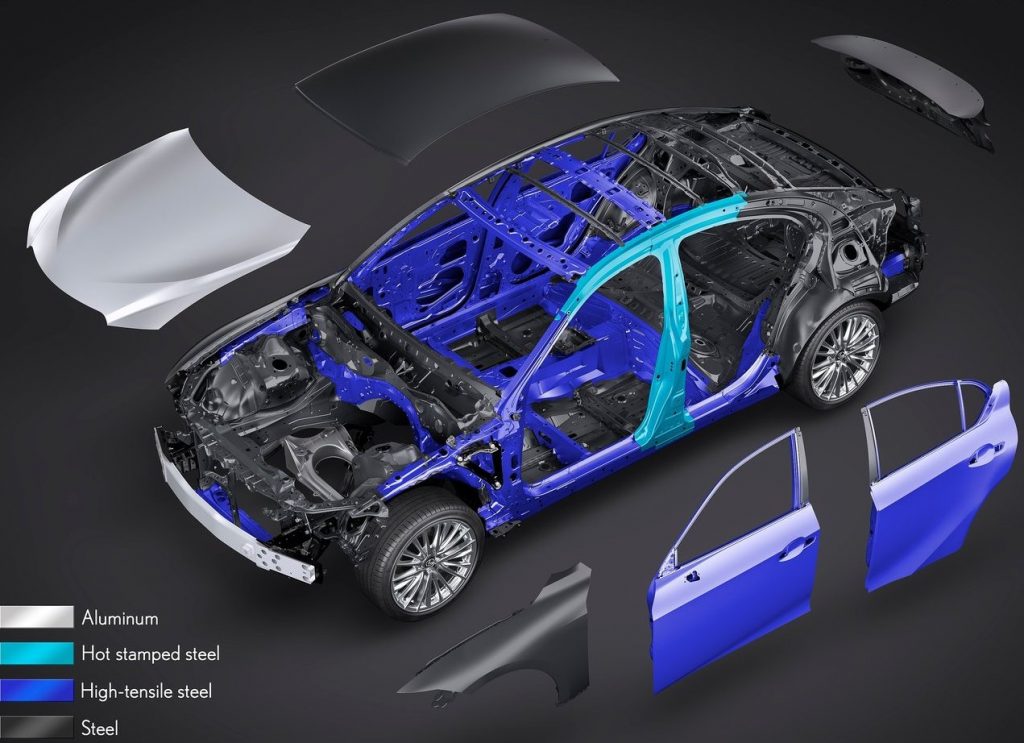
Aggressive styling that evokes a sense of high-level driving performance
“We aimed for an aggressive design by way of a wide and low stance that evokes a sense of driving and a sharp character line. To achieve a high degree of design, Lexus members in product planning, production technology, engineering, and styling combined their various insights and united behind development from an early stage. This enabled us to achieve the proportions of a four-door coupe that has a low center of gravity, an explicit form, and other elements that express the worldview of the new IS. We also pursued a deep and rich interior by paying close attention to detail, such as in the use of color in design and as in ornamentation. I think the styling makes it possible to feel the maturation of the fun of driving.” — Lexus International Chief Designer Kenichi Hirai
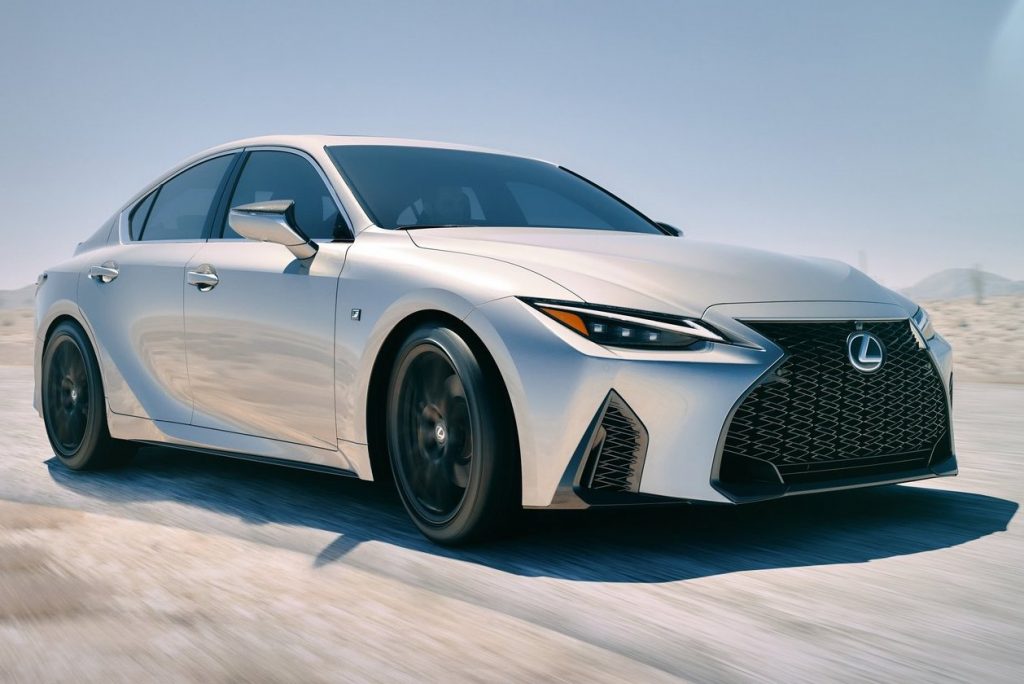
Exterior
- In addition to the use of slender headlamps featuring newly developed compact and lightweight lamp units, a low center of gravity is expressed through low-positioned areas around the grille matched by lowered side character lines, as well as through the shape of the rear extremity of the trunk.
- Muscular fenders, straight-line-type rear combination lamps sporting an “L” motif, and three-dimensional bumper garnishes add to the aggressive look, while new-design 19-inch tires and wide proportions based on a wide track evoke a sense of sporty driving.
- Gently sloped rear-quarter pillars, which help form a firm cabin silhouette that wraps around from the sides, contrast with the muscular rear fenders, further enhancing an aggressive look.
- Adding a mechanism that slides in tandem with the movement of the stamping press enabled use of drawing die construction, which is the latest in stamping technology and which makes possible the elaborate and dimensional forms unique to Lexus. Using this technology, Lexus could create a design that evokes images of alert and agile driving, such as through a sharper overall contour created by the character line around the decklid.
- A new-design Spindle Grille features a three-dimensional, polyhedral structure that originates from the foremost tip of the grille to emphasize a sense of presence. Block forms based on a spindle motif combine with a mesh pattern to achieve a sporty impression.
- Two new exterior colors were developed: Sonic Iridium, which takes advantage of strong shadows to further accentuate the shape of the vehicle, and Sonic Chrome, which exhibits a metallic quality in a high-gloss finish.
- The F Sport version boasts an exclusive “F” mesh pattern. Other specialized items, such as a grille-bottom air intake, specialized 19-inch alloy wheels, a rear spoiler, and the F Sport-exclusive Radiant Red Contrast Layering external panel color enhance the image of providing an emotional driving experience.
Interior
- The multimedia system features a new touchscreen and is compatible with SmartDeviceLink, Apple CarPlay, and Android Auto. Linking a user’s iPhone or Android smartphone to the wide 10.3-inch touchscreen allows for the remote control of the screen and audio functions, enhancing user-friendliness.
- Available chromatic colors are used on the upper instrument panel, and the entire space within the cabin is given a wide feeling. Also, available two-tone color schemes, such as those using Ochre or F Sport-exclusive Flare Red, provide color coordination that produces an uplifting feeling induced by color contrast when riding in the vehicle.
- Part of the door trim is done in a graphic pattern of embossed intersecting lines, representing a new form of Lexus decorative expression. Decorative ornamentation is finished for the first time in Ash (open-pore black, Black Geometric Film, or F Sport-exclusive Satin Chrome. Accents in surface treatments and other elements result in a sporty cabin atmosphere insistent on expressing the true qualities of the materials.
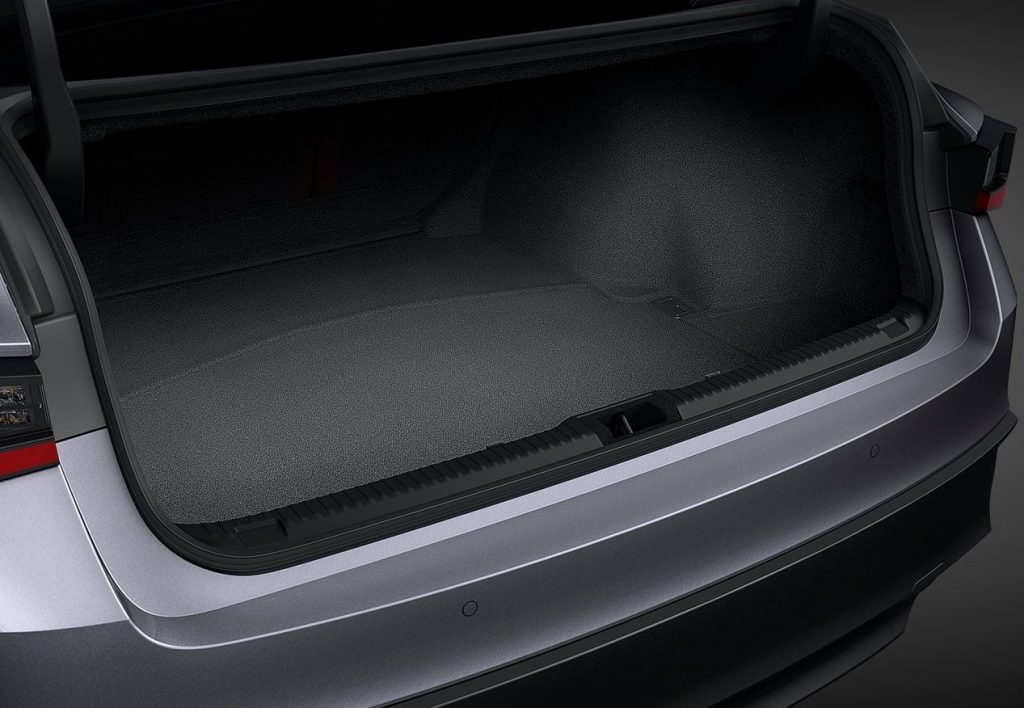
Application of state-of-the-art safety technologies, including the latest Lexus Safety System+
Lexus is developing safety technologies under the banner of eliminating traffic casualties, which is the ultimate wish of a society of mobility. Lexus prioritizes the development of the most-advanced safety technologies and the quick delivery of such to drivers―it does this by introducing cutting-edge technologies into its flagship vehicle models first. By developing technologies for widespread application by using know-how cultivated through introducing cutting-edge technologies into its flagships, Lexus plans to broadly introduce advanced technologies into all of its vehicle models. An example is the IS’s Lexus Safety System+, which has further evolved through the introduction of advanced safety technologies thus far cultivated through use in other Lexus vehicle models. Lexus, by contributing to a reduction in the risk of accidents and to a reduction in driver stress, aims to enable enjoyable driving that is safer and securer.
Further evolution of the Lexus Safety System+ preventive safety package
While retaining the configuration of a single-lens camera and millimeter-wave radar used in the conventional Lexus Safety System+, Lexus has added functions such as Emergency Steering Assist and has improved the system’s lane recognition performance. These advances are part of Lexus’s continuing efforts to prevent traffic accidents and fatalities, to reduce driver burden, and to develop driver-assist systems that provide a more-natural and safer driving experience.
Main safety technologies
- The performance of the single-lens camera and millimeter-wave radar has been improved to expand the response range of the Pre-Collision System, which is designed to detect daytime bicyclists and pedestrians in low-light conditions and, at intersections, to detect oncoming vehicles before right turns and pedestrians crossing the street from the direction toward which the vehicle was traveling before it started to make a right or left turn. Also featured are functions such as Emergency Steering Assist, which assists steering within the vehicle’s lane as cued by the driver, and Low Speed Acceleration Control, which supports the prevention of collisions caused by pedal misapplication at times of reduced speed.
- Dynamic Radar Cruise Control and Lane Tracing Assist (LTA) combine to make it easier for the driver to keep in the current lane on a motor-vehicle-only roadway, etc. If the system detects a potential lane departure, LTA alerts the driver with a visual warning and either an audible alert or steering wheel vibration. In the new IS, lane recognition performance, which makes assist possible, has been improved. When LTA is activated, AI technologies are applied to camera-actuated, white-line recognition for advanced deceleration of the vehicle in line with the size of the curve. Keeping lateral g-forces constant while driving through curves contributes to stable and comfortable driving and makes driving assist more continuous even in curves with a smaller radius and in tunnels.
- Automatic High Beam detects preceding or oncoming vehicles and automatically switches between high beam and low beam headlights.
- Road Sign Assist acquires road sign information using a camera and navigation maps and displays it on the multi-information display. This reduces possible driver failure in recognizing signs and supports safe driving.
- If non-operation by the driver continues during use of Lane Tracing Assist, Driver Emergency Stop Assist (coordinated with Lane Tracing Assist) supports the driver through audio and visual alerts and gentle deceleration. It then activates the vehicle’s hazard lamps and horn to alert those outside the vehicle to help prevent or reduce damage to the vehicle or to others, while slowing and eventually stopping the vehicle within its lane. After stopping the vehicle, it unlocks the doors and activates an automatic HELPNET connection for a rescue request, contributing to early driver rescue.
Various other forms of advanced safety equipment are featured on the new IS and are being actively introduced by Lexus. These include parking support brakes, which contribute to mitigation of damage in collisions due to pedal misapplication in places such as parking lots or in minor collisions with vehicles approaching from the rear, and the Panoramic View Monitor, which supports periphery safety checks.
The new IS will be available for sale in global markets including the North America, Japan, the Middle East, and specific countries in South America, Oceania, and Asia.



